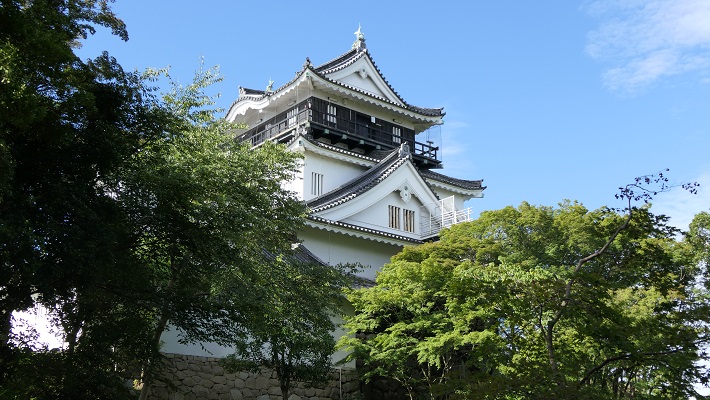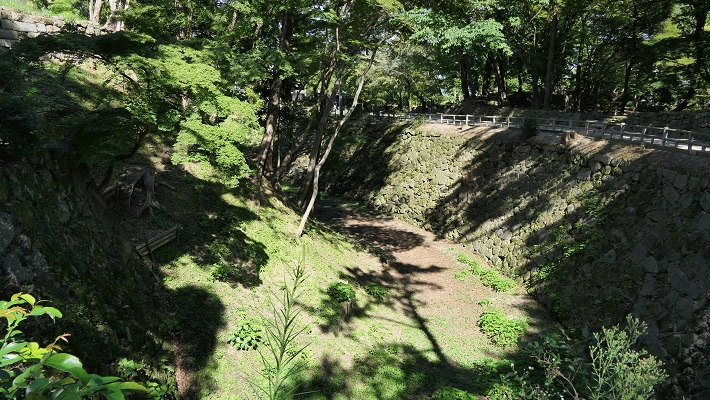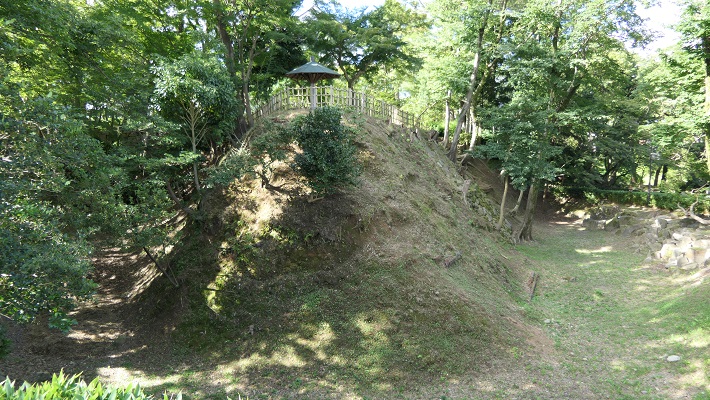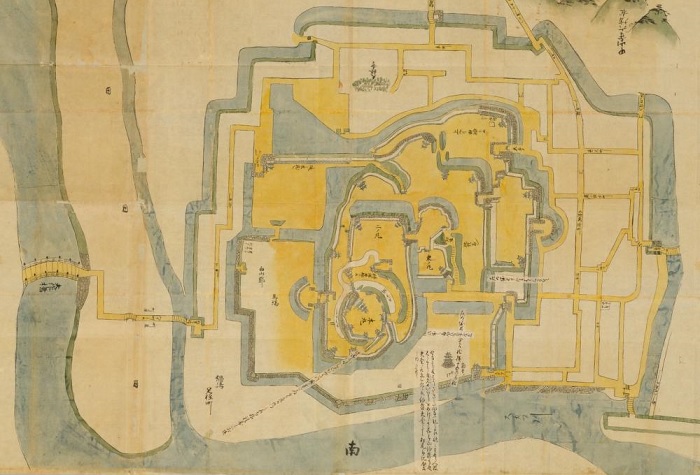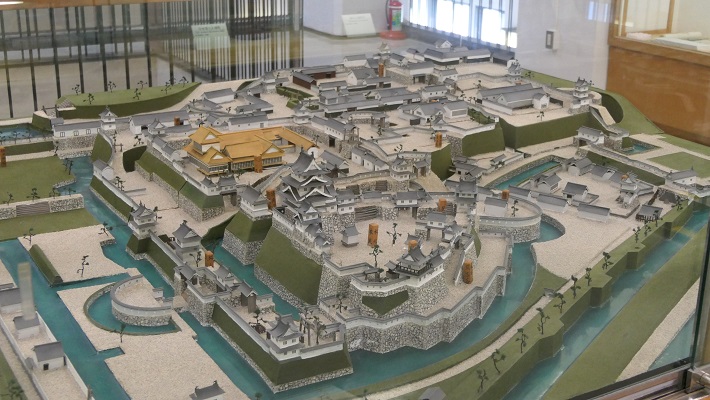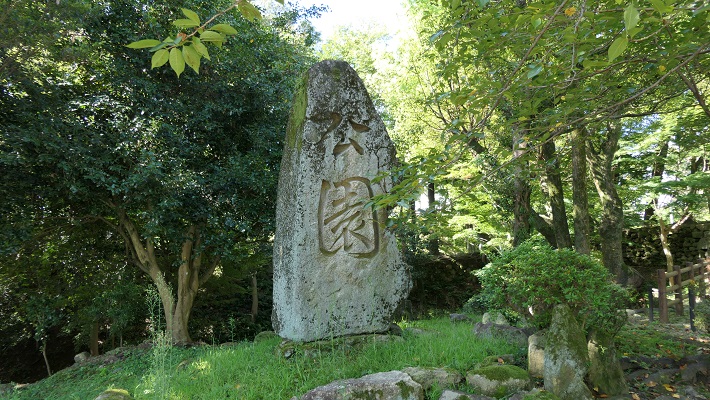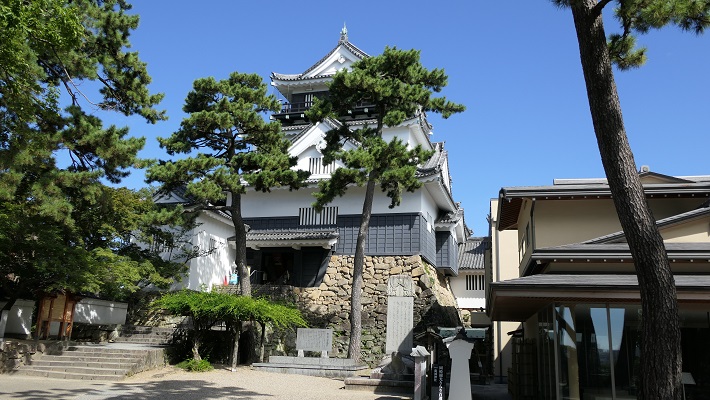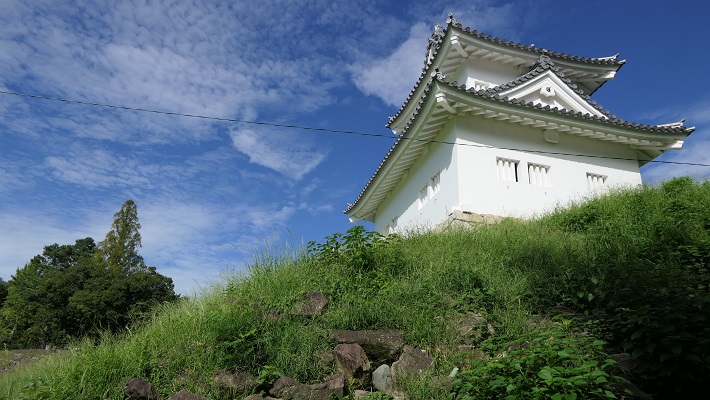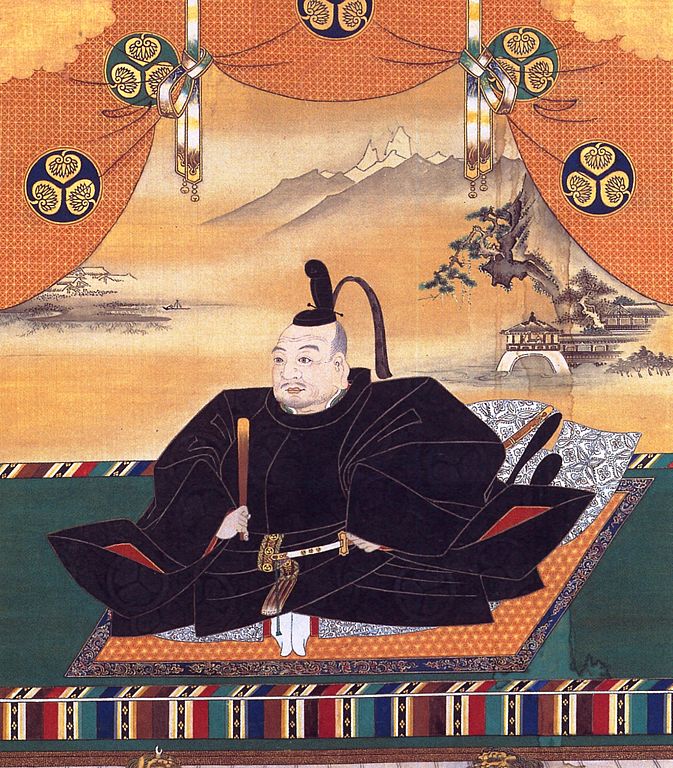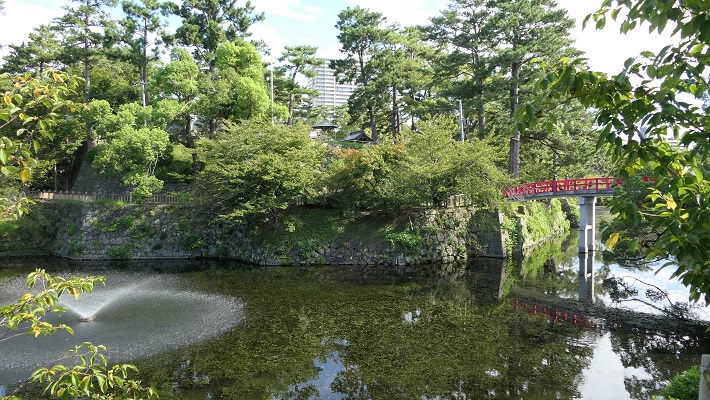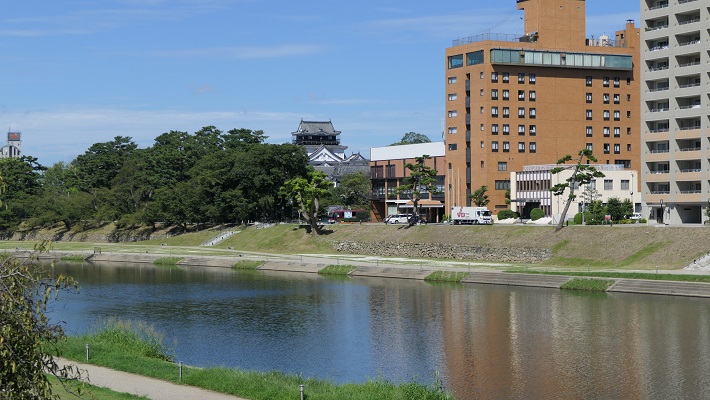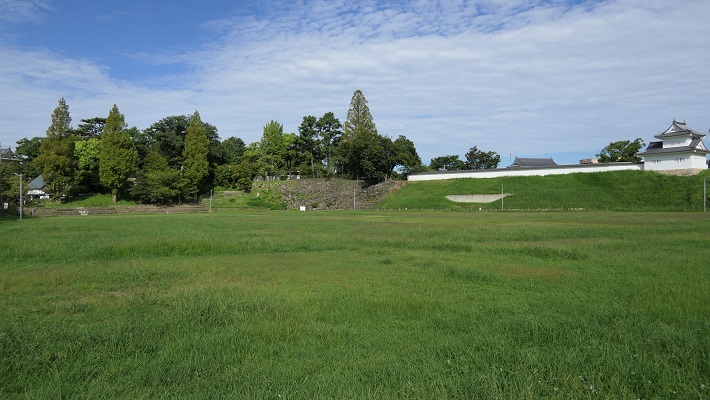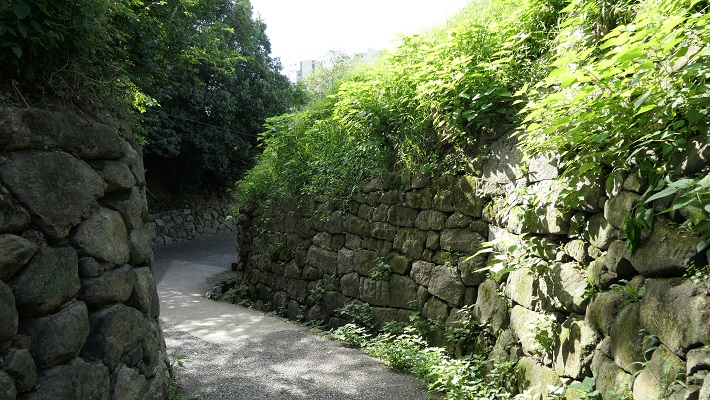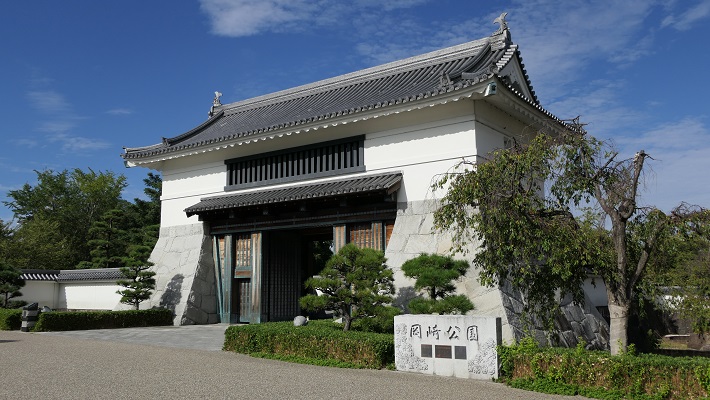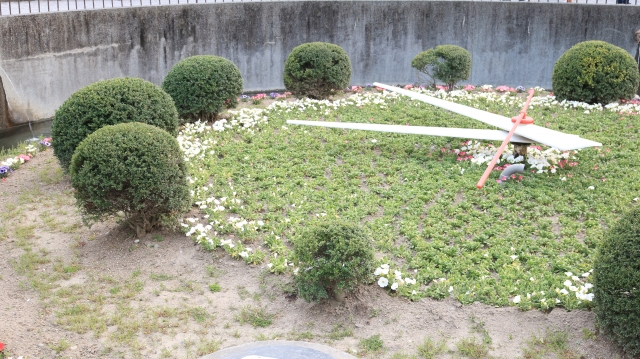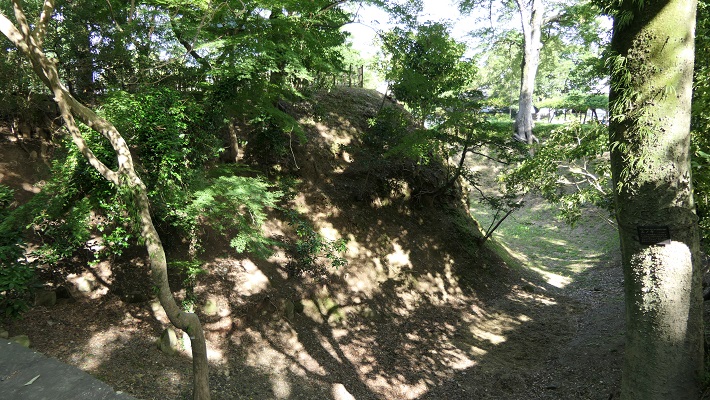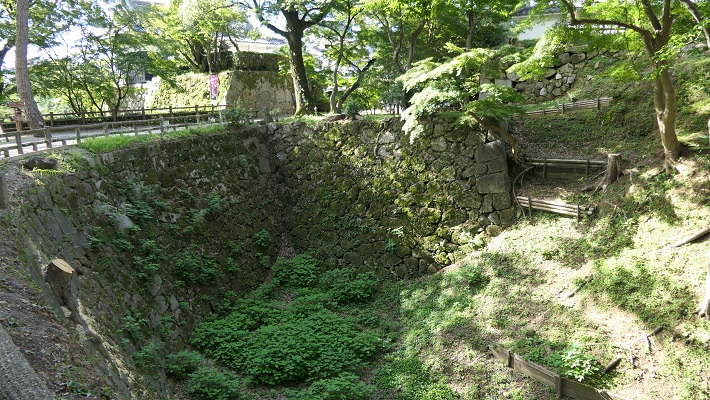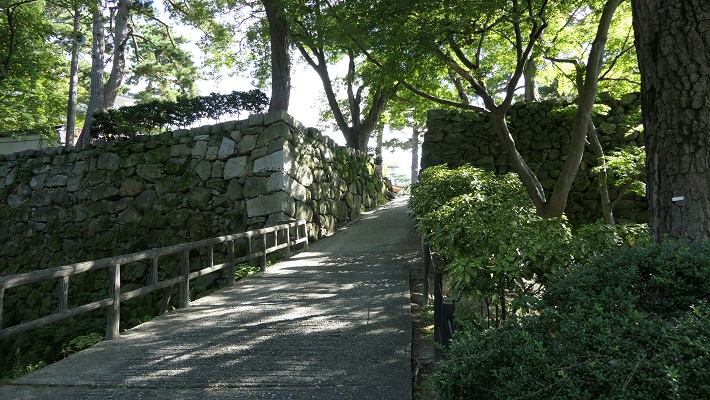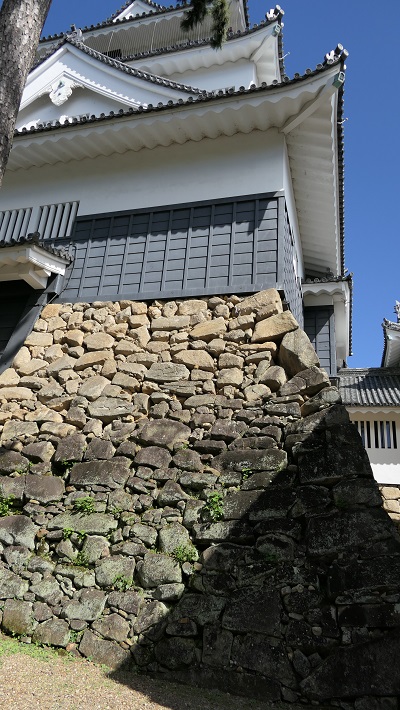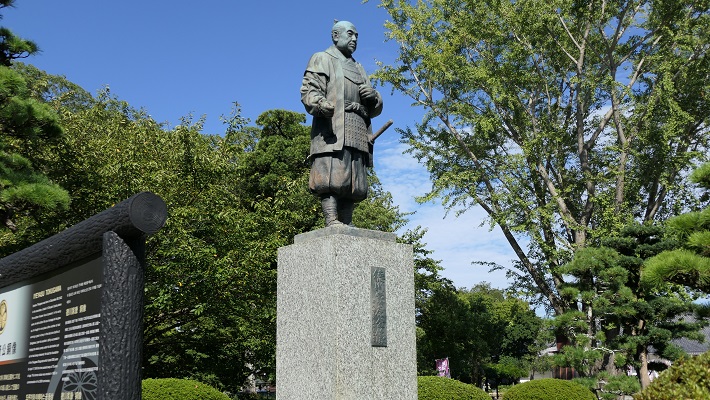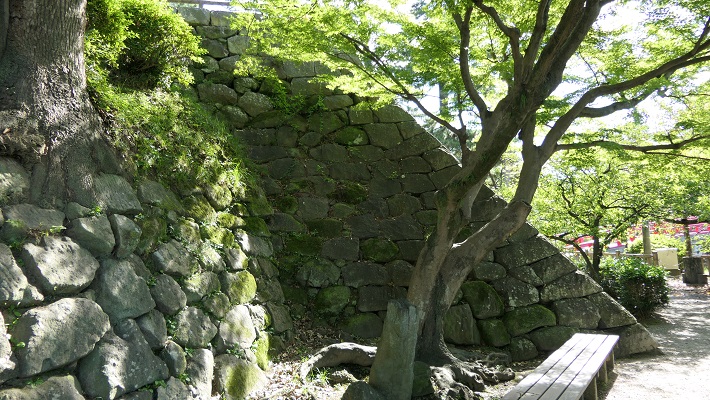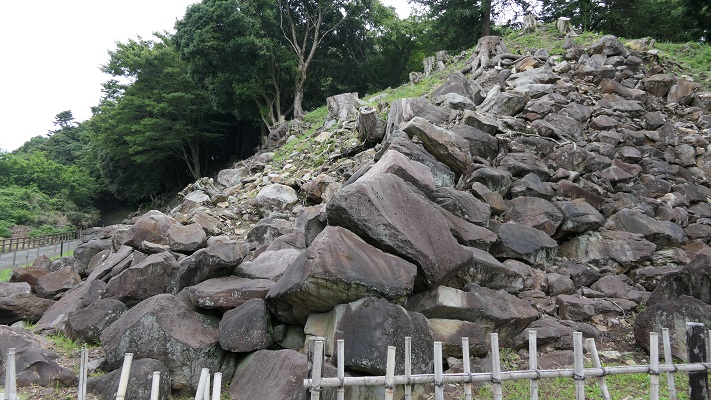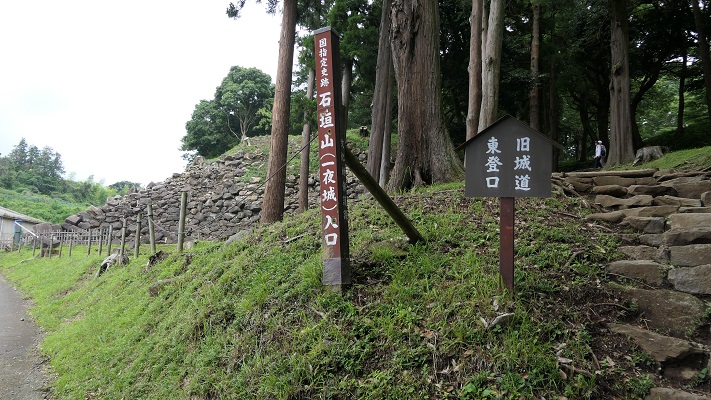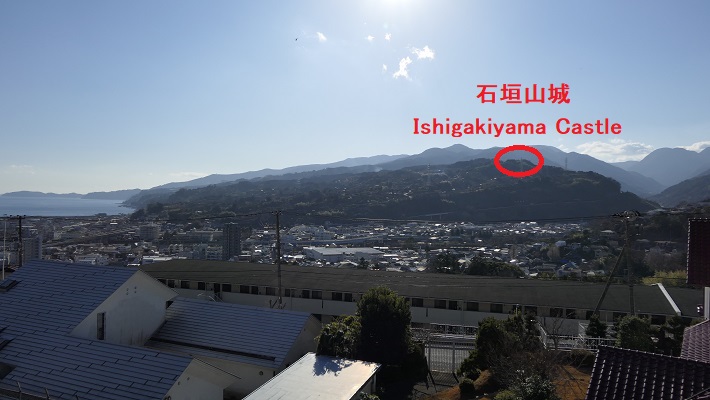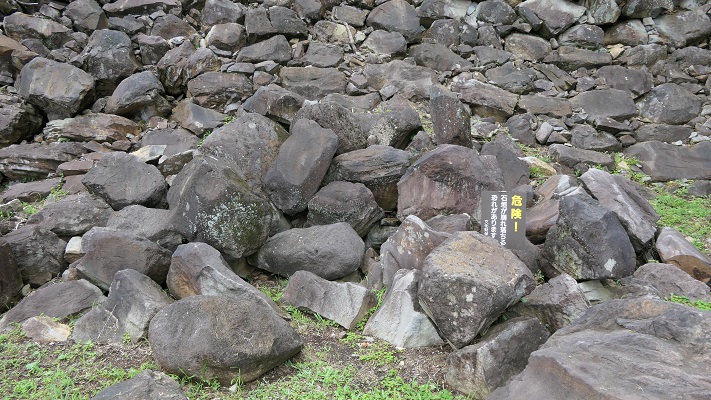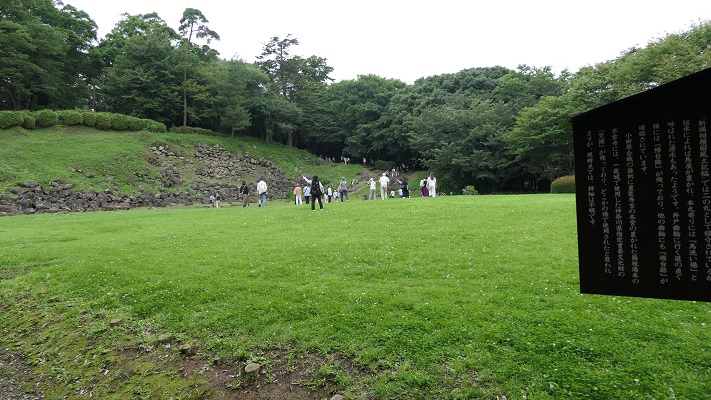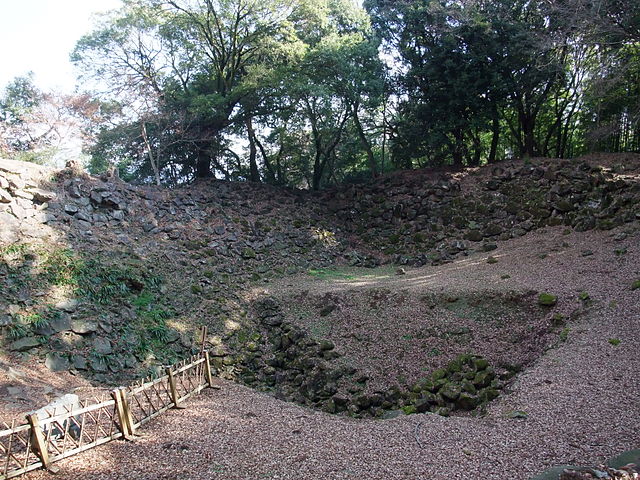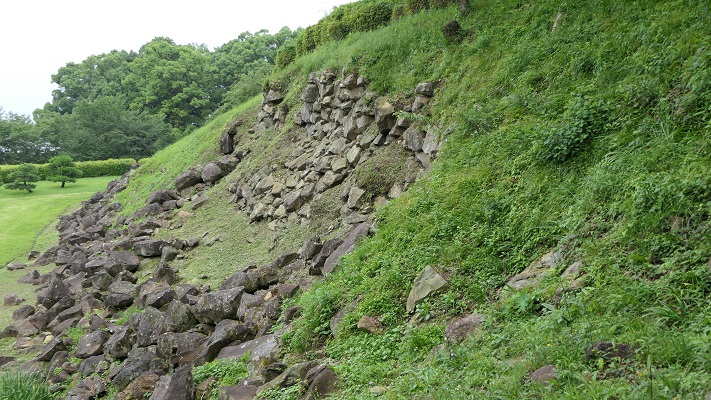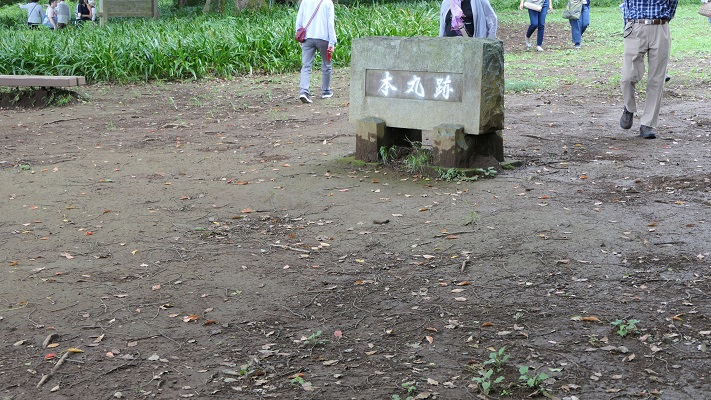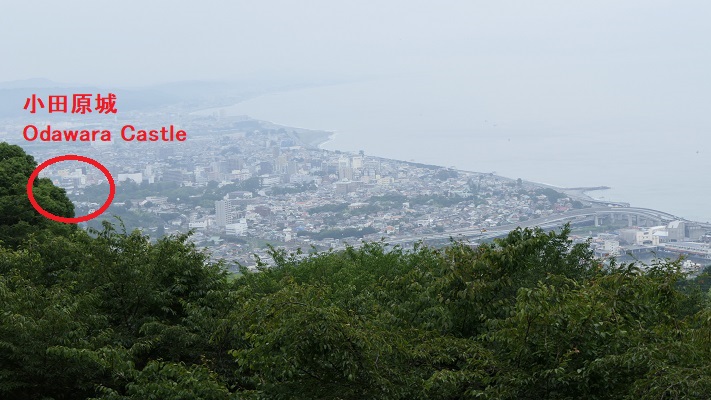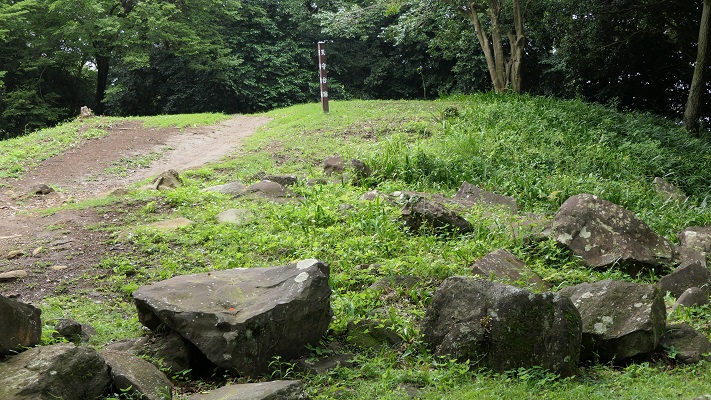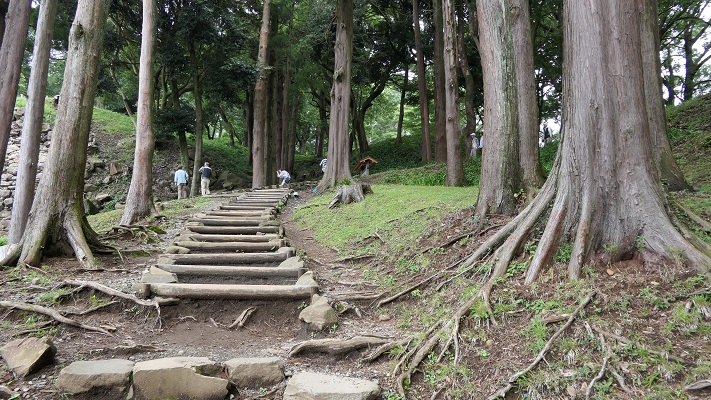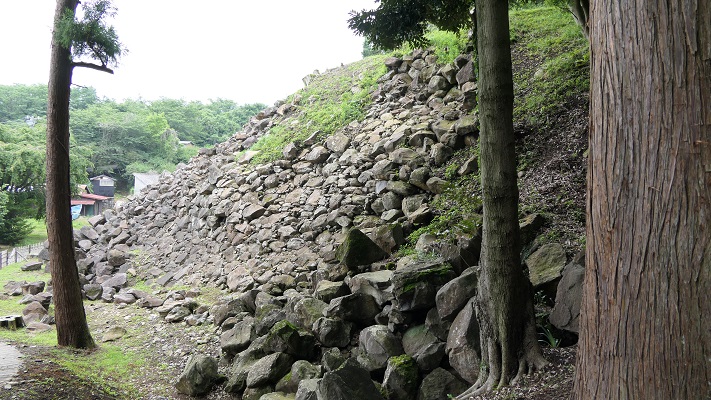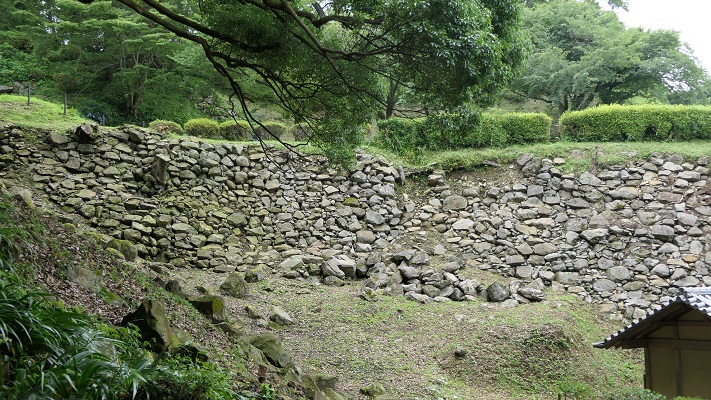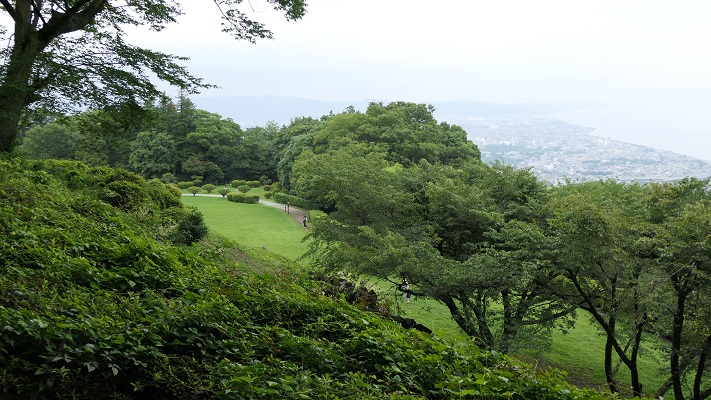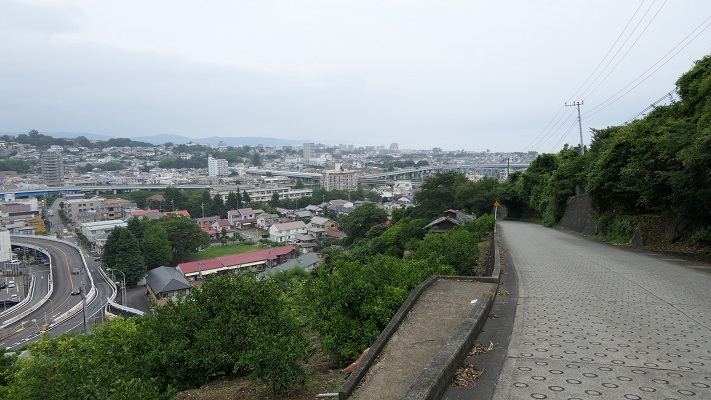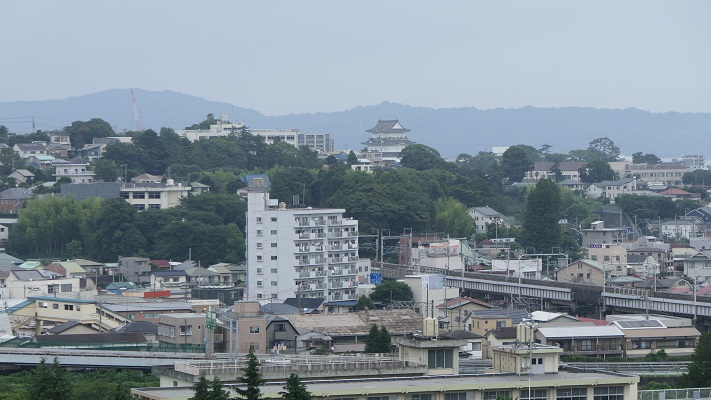立地と歴史~Location and History
信玄が作った橋頭堡~Shingen mede a bridgehold
古宮城は、現在の愛知県新城市にあたる作手高原の上にありました。この地域は、戦国時代には徳川氏が本拠としていた三河国に属していました。有力な戦国大名、武田信玄は甲斐国(現在の山梨県)から三河国を侵略しようとしました。彼はそのための橋頭堡を築いたと言われています。それが古宮城でした。
Furumiya Castle was located in Tsukurite hills in what is now Shinshiro city, Aichi Pref. This area belonged to Mikawa Province where the Tokugawa clan was based during the “Sengoku” or Warring States Period. Shingen Takeda, a strong warlord from Kai Province (now Yamanashi Pref) aimed to invade Mikawa Province. It is said that he built a bridgehead for it. That was Furumiya Castle.
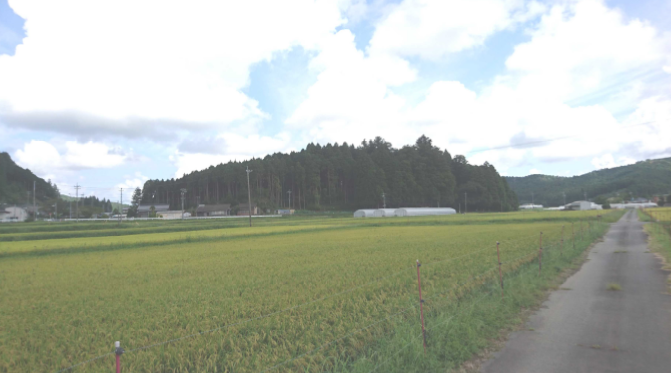
勝頼が完成させる~Katsuyori completed it
信玄の死後、彼の息子勝頼は1574年、再度試み、そのため古宮城を改良、完成させました。この城は比高が30mしかない宮山という小山にありましたが、地域を見渡せる場所です。一般に城は戦いのためだけでなく、居住、統治、そしてシンボルとしても使われました。古宮城は戦さに特化しており、500名くらいの兵が駐屯していたようです。この地域は武田と徳川との間で緊張状態にあり、兵士たちは常に臨戦態勢にありました。
After Shingen died, his son Katsuyori tried again in 1574, therefore he improved and completed the castle. The castle was on a small hill called Miya-yama which is just 30m relative height, but it overlooked the entire area. Castles were usually used not only for battle, but also for residence, governance, and as a symbol. Furumiya Castle was specialized for battle, with an estimated garrison of 500 soldiers. This area was under tense conflict between the Takeda and Tokugawa. The soldiers seemed under arms all the time.

勝頼の敗戦により終焉~Katsuyori’s defeat ended it
勝頼は、三河国の東、遠江国にあった高天神城を手に入れ、1575年5月に古宮城と同じ国あった長篠城を攻撃しました。彼は、徳川、そして同盟関係にあった織田氏に決戦を挑み、倒そうとしました。ところが、逆に完全に返り討ちにあってしまいます。勝頼は何とか本拠に逃げ帰ることができましたが、多くの家臣や兵士を失いました。彼は二度と三河国に戻ってくることはありませんでした。古宮城は、長篠の戦いの後、放棄されたか、徳川に占拠されたようです。
Katsuyori captured Takatenjin Castle in Totoumi Province the east of Mikawa Province, and attacked Nagashino Castle in the same province as Furumiya Castle in May 1575. He aimed to invite Tokugawa and their allies, the Oda clan, to a showdown, and defeat them. However, he was completely countered by them instead. Katsuyori was somehow able to escape back to his home, while a lot of retainers and soldiers were lost. He would never return to Mikawa Province, so Furumiya Castle seemed to be abandoned or taken by the Tokugawa after the Battle of Nagashino.
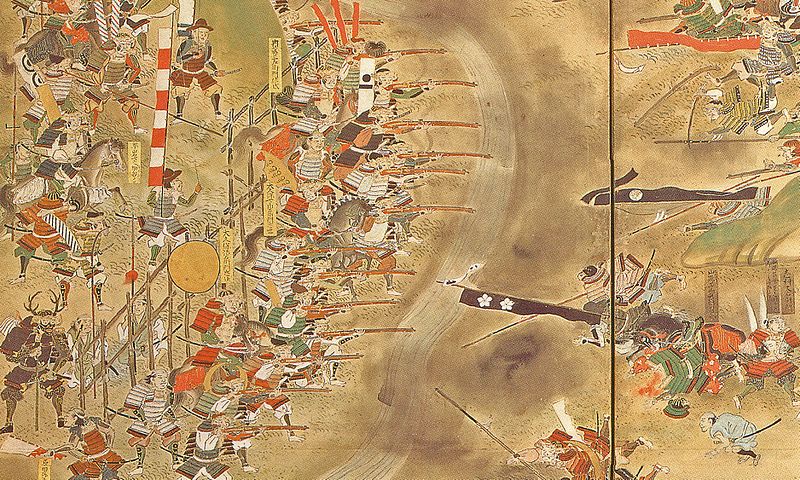
特徴~Features
城跡の概要~The overview of the ruins

現在、古宮城跡には現存建物はなく、木々に覆われていますが、土造りの基礎が武田氏の築城法をよく残していると言われています。この城は、深い空堀により東西の部分に分かれています。
Now, the ruins of Furumiya Castle have no standing buildings and is covered with trees, but it is said that its foundation made of earth shows the Takeda clan’s method of building castles. The castle was divided into an eastern and western part by a deep dry moat.
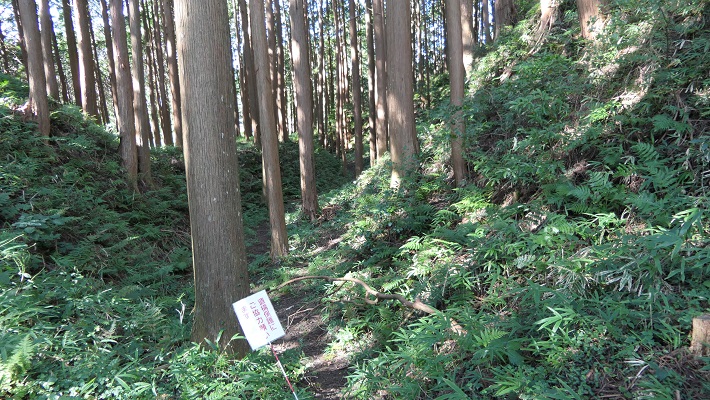
主要な曲輪~Primary enclosures
東部分には、恐らくは司令部があった「主郭」がありました。その入り口は「桝形」と呼ばれ、厳重な防御のため四角く区切られていました。西部分には「二の曲輪」があり、主郭から突き出ていて、空堀を渡るただ一本の土橋によりつながっていました。この構造は、武田独特の防御システムである「馬出し」に似ています。
The eastern part had the Main Enclosure or “Shukaku” where probably the command post was. Its entrance was made in square shaped for strict defense called “Masugata”. The western part had the Second Enclosure or “Nino-Kuruwa” which sticks out from Shukaku and is just connected by one earthen bridge across the dry moat. This structure is similar to Takeda’s unique defense system called “Umadashi”.
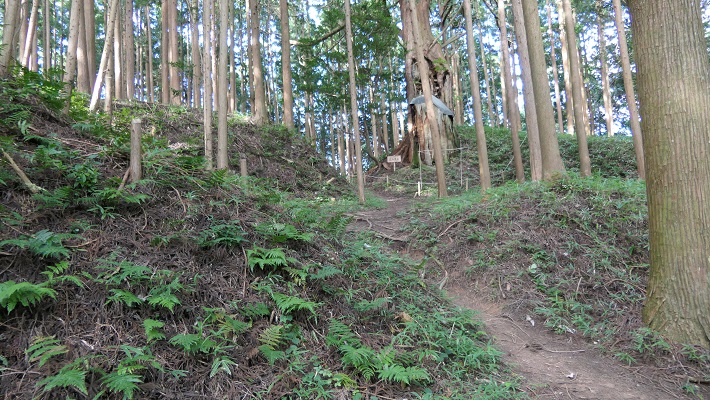
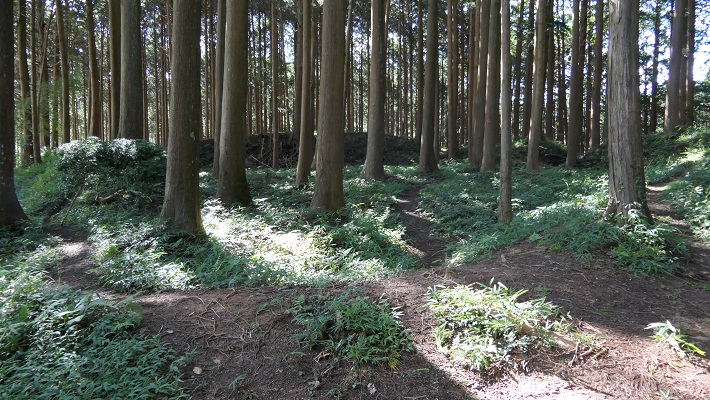
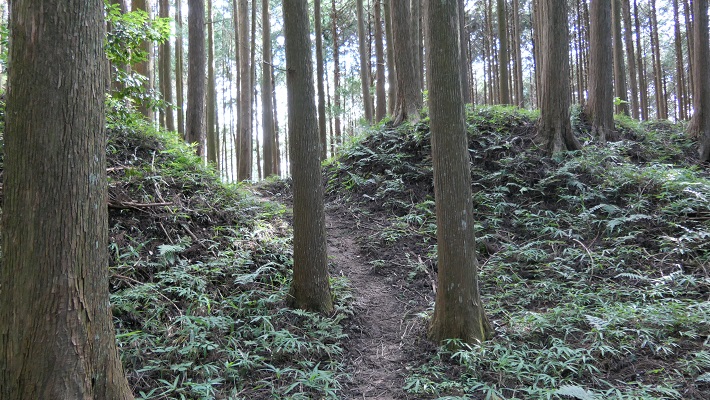
厳重な防御~Its strict defence system
この部分は西側にある道路に向かって大手口が開いていたようです。訪問者でも敵でも二の曲輪に達するためには曲がりくねった道を登っていく必要がありました。特に、二の曲輪の北西側には空堀が何重にも取り巻いていました。武田が、徳川がこの方角から攻めてくると思ったからかもしれません。
The part seemed to open the main entrance to a road in the western direction. Visitors or enemies would have to climb up winding routes to reach Nino-Kuruwa. In particular, there were multiple dry moats in the north-west of the enclosure, as Takeda might have thought that Tokugawa would attack this castle from the direction.

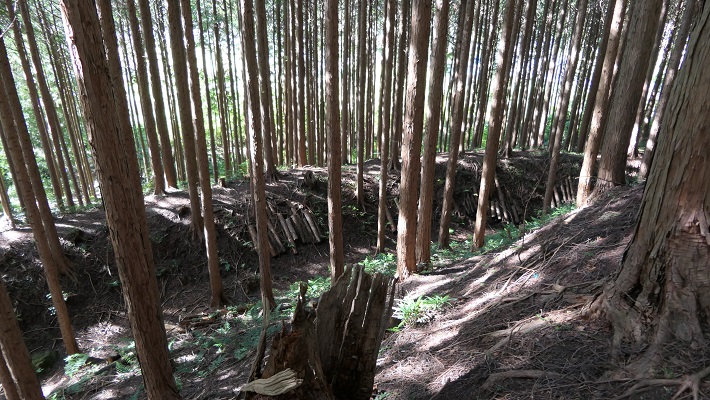
城跡の楽しみ方~How to enjoy the ruins
現在の城跡入り口は神社の脇にあり、元あった場所とは異なります。この入り口を通って、主郭に向けて直接登って行くことができます。城のレイアウトは、これまで述べた通り残っています。城を理解するポイントを押さえておけば、城は昔はどんな風だったのか想像する楽しみがあります。
The present entrance the ruins is set beside a shrine at a different place from the original. You can go straight up to Shukaku through the entrance. The layout of the castle remains as mentioned above. If it is possible to keep the key points of the castle in mind, you can also enjoy imagining how the castle was in the past.

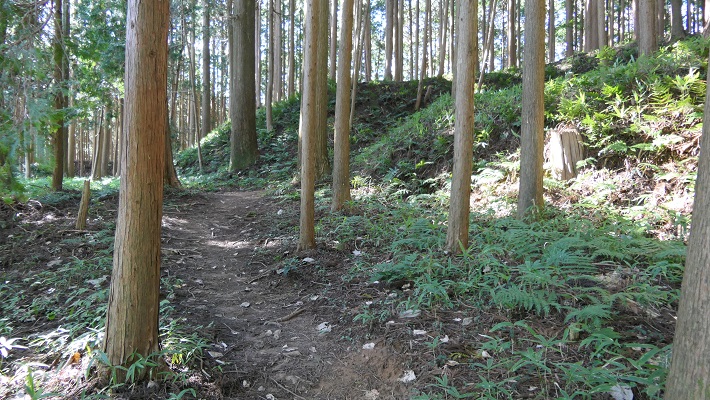
その後~Later History
古宮城がは廃城となってからは、1617年には山麓に古宮白鳥神社が設立されました。作手高原は過去においては大方湿地帯でした。そのため白鳥がよく見られたそうです。この地期の人たちは白鳥を愛し、それに関わる神社を設立したのです。城跡は、この神社のおかげで長い間維持されてきたようです。
After Furumiya Castle was abandoned, Furumiya-Shiratori Shrine was established at the foot of the hill in 1617. Tsukurite hills was mainly waterlogged in the past, so cranes could be seen at that time. People in the area loved them and established many shrines related with them (Shiratori means crane). The ruins of the castle seemed to have been kept by these shrines for a long time.

私の感想~My Impression
古宮城跡には、現存建物も、石垣も、案内所さえもありません。歴史家は、古宮城には元々小屋、簡単な櫓、木柵くらいしかなかっただろうと推測しています。更には外側から見れば城跡は木がこんもりした小山にしか見えないかもしれません。でも一旦中に入って城の痕跡に気づけば、武士や作業者たちががこの城を築くのにどんなに大変だったか見て取れるでしょう。城を見ることの面白さの一つは、限られた資材や資源を基に、城がいかに効率的に、しかし強力に作られたか理解することだと思うのです。
Frumiya Castle Ruins don’t have any standing buildings, stone walls, or even a guide house. Historians speculate that even the original Furumiya Castle had just huts, simple turrets, and wooden fences. In addition, you may think the ruins look like a hill with forests from the outside. But once you have realized the traces of the castle inside, you can see how hard the warriors and workers made efforts to build the castle. I think that one of the most interesting things to see castles is to understand how they are built efficiently but strongly using limited materials and resources.
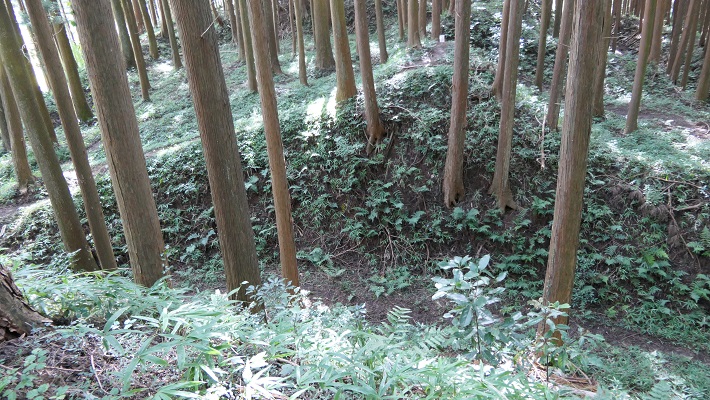
ここに行くには~How to get There
ここに行くには車がおすすめです。新東名高速道路の新城ICから国道151号と301号を通って約40分程です。神社の前に小さいですが、駐車スペースがあります。
公共交通機関を利用する場合には、新城駅近くの新城栄町バス停で新城市バス(作手線)に乗り、鴨ヶ谷口バス停で降りてください。バス停から徒歩約10分で現地に着きます。
東京、名古屋または大阪から新城駅まで:東海道新幹線で豊橋駅まで行き、JR飯田線に乗り換えてください。
I recommend using a car to get there. It takes about 40 minutes from the Shinshiro IC on Shin-Tomei Expressway through Route 151 and 301. There is a small parking lot in front of the shrine.
If you want to use public transportation, take the Shinshiro city bus (Tsukurite line) at the Shinshiro-Sakaemachi bus stop near Shinshiro station, and get off at the Kamogayaguchi bus stop. It takes about a 10-minutes walk from the bus stop to get there.
From Tokyo, Nagoya or Osaka to Shinshiro st.: Take the Tokaido Shinkansen super express to Toyohashi Station, and transfer for JR Iida line.
リンク、参考情報~~Links and References
・古宮城跡、新城市~Komiya ruin of a castle, Shinshiro City
・「歴史群像143号、戦国の城/三河古宮城」学研(Japanese Magazine)
・「趣味どきっ/お城へ行こう! 第二の陣 武田氏の城造り」NHK、2016年(Japanese TV Program)

